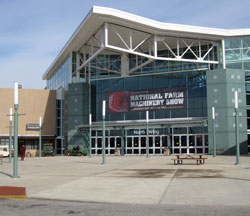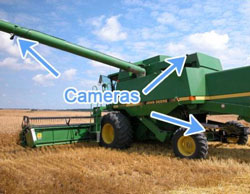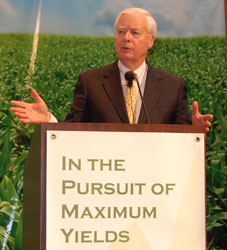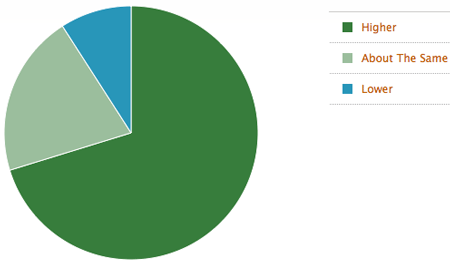 It’s one thing for growers or livestock producers and processors to work together, or vertically integrate. But what can happen when the World Wildlife Fund, Wal-Mart, Coca-Cola, McDonalds, Cargill, Intervet/Schering-Plough and beef producer groups get together? A recent story in the Sydney Morning Herald (Australia) discusses the issue and the possible eco-food results.
It’s one thing for growers or livestock producers and processors to work together, or vertically integrate. But what can happen when the World Wildlife Fund, Wal-Mart, Coca-Cola, McDonalds, Cargill, Intervet/Schering-Plough and beef producer groups get together? A recent story in the Sydney Morning Herald (Australia) discusses the issue and the possible eco-food results.
It is a subtle, yet vital, shift in the way food producers, manufacturers, retailers and groups outside the traditional food fence, such as WWF, are addressing a new paradigm in feeding the world’s rapidly increasing population: how food is produced, not just how much.
In practice the two issues are inseparable. The difference is that while feeding a projected 9 billion people by 2050 from less farmland has long concerned governments, and global aid and food bodies, doing so in a way that satisfies escalating environmental and animal welfare scrutiny, state and national regulations and changing consumer attitudes is considerably more complex.
Behind the farm gate it means that practices in the largest and most advanced agricultural nations, including Australia, will be in the spotlight as the new food production ground rules take shape.
Enter WWF as the unexpected and uninvited powerbroker in this high-stakes scenario. The world’s largest independent conservation organisation is targeting 100 key companies that globally trade commodities including beef, sugar, cotton, palm oil, soybeans and coffee to participate in ”round table” forums about how extra food can be produced with fewer, but more precise, inputs.
WWF’s Australian program leader for water, Nick Heath, says three times more food and fibre will be needed in the next 40 years than is produced now. ”The answer lies in precision agriculture – more crop per drop.”
And Rob Cairns, the organisation’s Australian program manager for sustainable agriculture, who has a background in the cotton and sugar industries, assures the food chain that WWF is ”just one player” in the quest for a lower food environmental footprint, ”not the policeman”.
”It’s about sustaining food production without impacting on eco-systems,” he says. ”At the moment, it’s confusing for consumers. By default, organics have been seen as the answer. But organics can’t clothe and feed the world, so we have to work with those who can make a difference. And it has to involve a number of commodities.”
Beef is at the top of that list.
In this regard, the Australian cattle industry may be ahead of the game. Meat & Livestock Australia is developing a voluntary environmental module that will enable beef producers to demonstrate the ”environmental responsible nature” of their production systems.
But it remains unclear whether farmers’ ability to merely demonstrate environmental responsibility, rather than prove it, will be enough.
To this end, a group of cattle producers in Gippsland, Victoria, is marketing beef sourced from properties with independently audited environmental management systems that comply with the international ISO 14001 standard. Their ”enviromeat beef”, sourced from 15 suppliers, is thought to be the first labelled food product backed by an environmental management system in Australia.
Read on to learn more…
 Somebody ordered some beautiful weather for this year’s National Farm Machinery Show. Sunshine and “warm” is the way I like it. I got on site early and got in some exercise just wandering around and seeing the show in set up mode.
Somebody ordered some beautiful weather for this year’s National Farm Machinery Show. Sunshine and “warm” is the way I like it. I got on site early and got in some exercise just wandering around and seeing the show in set up mode.


 “Don’t think they (the EPA) can’t shut you down,” he said at the recent GROWMARK
“Don’t think they (the EPA) can’t shut you down,” he said at the recent GROWMARK 

 Farmers know that planter skips and doubles are costly, especially given current grain prices. Fortunately some of today’s monitors can really help pinpoint when a specific row unit causes an error—and that information can lead to quicker and more efficient troubleshooting and repairs.
Farmers know that planter skips and doubles are costly, especially given current grain prices. Fortunately some of today’s monitors can really help pinpoint when a specific row unit causes an error—and that information can lead to quicker and more efficient troubleshooting and repairs.

 GPS technology firm
GPS technology firm 
